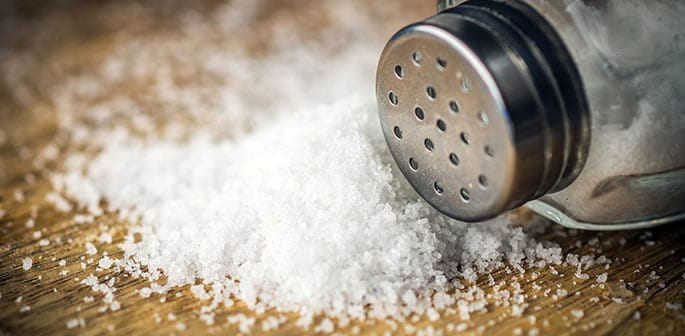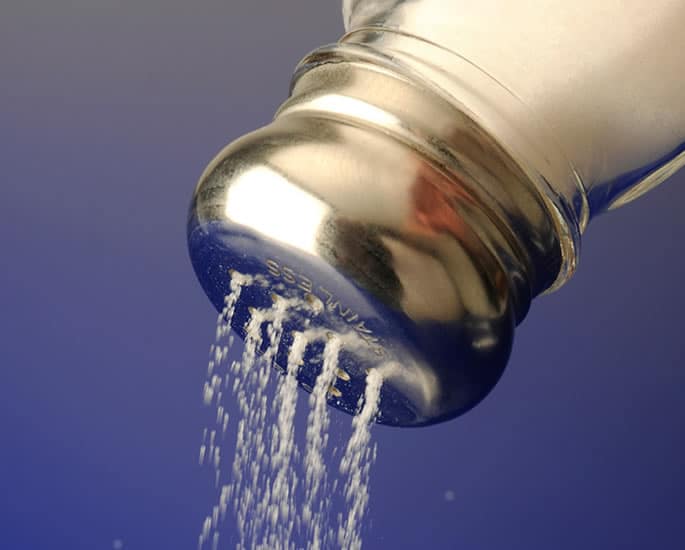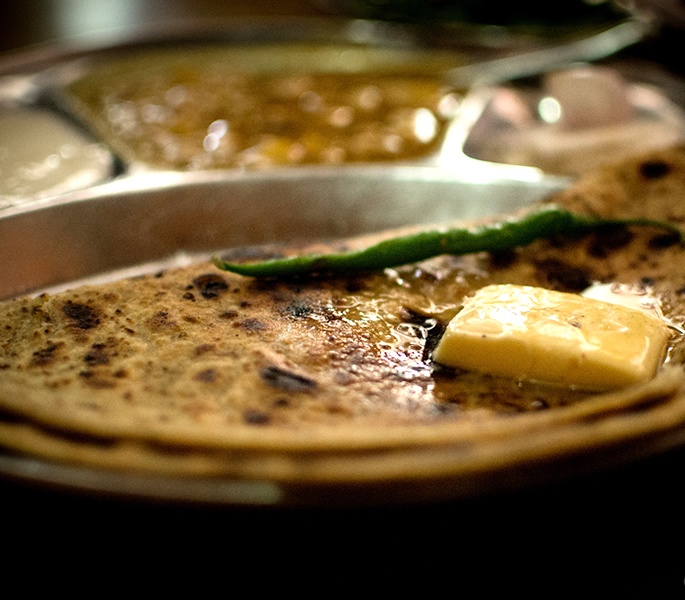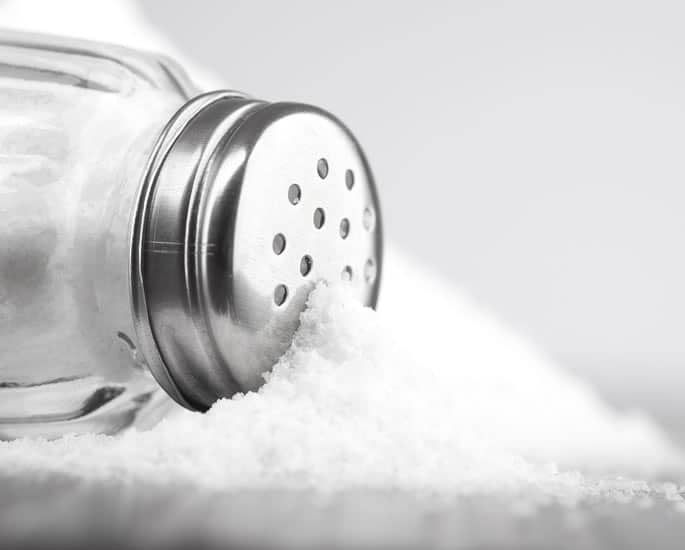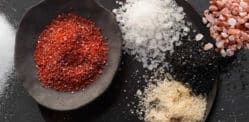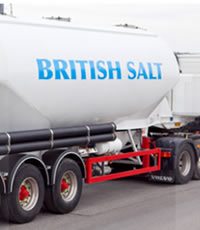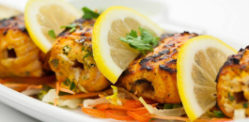Gradually reduce the amount of salt you add to your food
The amount of salt you consume has a direct effect on your blood pressure. If you cut the salt in your diet it can make a huge positive impact on your health.
In fact, tens of thousands of lives could be saved each year if more of us consumed less than the recommended 6 grams of salt per day.
Yet despite the dangers of a high salt diet many people choose to ignore government advice to cut down.
Remember it is not just the salt you add to your food, it is also salt that is already added to the foods you buy. It all counts.
The health effects of salt are rarely immediate. It can build up over the years leading to damaged arteries and increased risk of heart disease.
Why is Salt Bad for My Health?
Many of us eat more salt than we need for optimum health.
High salt intake is associated with health conditions such as blood pressure, stroke, stomach cancer, osteoporosis and kidney failure.
If that isn’t enough to put you off your Bombay Mix then bear in mind that South Asians have an increased risk of heart disease and diabetes. Being from South Asian descent can increase your risk of dying from heart disease by as much as 30-40%.
How Much is Too Much Salt?
The average person in the UK consumes 8.6 grams of salt per day. Compare this with government recommendations of 6 grams per day (which equates to 1 level teaspoon) and it is clear that we have a problem.
Current salt recommendations in the UK are as follows:
| Age group | Maximum salt intake per day (g) |
| 0-6 months | <1g / day |
| 6-12 months | 1g / day |
| 1-3 years | 2g / day |
| 4-6 years | 3g / day |
| 7-10 years | 5g / day |
| 11 years and above | 6g / day |
(Source: SACN)
Getting children to eat less salt at an early age is a great way of getting them into the habit of reducing their salt intake as they grow older.
Reading food labels and reducing the amount of salt added to your cooking, and at the table, is the only way of finding out just how much salt you have.
But it’s Part of Our Desi Culture!
Cultural habits die hard.
You may know a relative who still adds salt to their fruit or has buttery parathas every Sunday!
Myths of having salty water in hot weather also prevail.
Tasty food is a part of the South Asian culture but we are now paying the price in terms of our health.
The good news is that even a small reduction in salt intake, as little as 1 gram per day, can improve blood pressure and risk of heart disease.
Foods that are eaten as part of a traditional South Asian diet can be modified and flavoured in different ways.
For example, flavour your food with herbs, spices, chilli, lemon juice or garlic instead.
Looking at Food Labels
Labelling on some South Asian foods is limited and can make it harder to decipher the facts. Many foods are imported and do have a nutrition breakdown panel to check salt levels.
If this is the case check the ingredients list. If salt or sodium is featured in the top four ingredients then it is likely that food is high in salt.
Salt is also known as Sodium Chloride. On some labels, there will be no mention of ‘salt’ yet it will mention ‘Sodium Chloride’ as the ingredient.
In some cases, this is deliberate as the Sodium figure makes the salt content of the food appear to be lower.
Use the following sum to help you calculate from the sodium to salt and vice-versa:
To convert sodium to salt: multiply the sodium content by 2.5
To convert salt to sodium: divide the salt content by 2.5
For example, 1 gram of sodium = 2.5 grams of salt.
What is the Traffic Light Labelling System?
You may come across foods with a traffic light bar on the packaging.
If these are used red means high, amber is medium and green means low.
If a food has a red traffic light for salt leave these foods for special occasions, and aim to eat foods that are green or amber most of the time.
Where does All this Salt Come From?
A whopping 75% of the salt we eat is hidden in processed foods such as bread, breakfast cereals, sauces, cheeses, butter, frozen foods, takeaways, soups savoury snacks and meats.
Salt is a popular preservative for many pre-packaged foods.
Foods eaten every day such as bread can also be extremely high in salt. For example, one in four loaves of bread contains as much salt per slice as a packet of crisps!
It is most definitely worth checking labels and shopping around as there is huge variation per product and many of these products don’t taste obviously salty.
Pre-packaged foods such as sandwiches can also be a high source of salt.
Whilst many of the supermarkets and manufacturers are working to reduce the amount of salt in their food it is still advised that you check for yourself before purchasing.
According to the National Diet and Nutrition Survey (NDNS) 2011 the major foods contributing to salt in our diet are:
| Food | Percentage contribution to our diet (%) |
| Bread | 18% |
| Bacon and Ham | 7% |
| Pasta, Rice and other miscellaneous cereals | 6% |
| Chicken and Turkey Dishes | 6% |
| Vegetables (not raw) including vegetable dishes | 6% |
| Savoury sauces, pickles, gravies & condiments | 5% |
| Sausages | 4% |
| Cheese | 4% |
| Biscuits, buns, cakes, pies, puddings, pastries | 4% |
You might be thinking that home cooked food has lower salt levels than foods that are bought or eaten out, yet pouring salt from the container can be extremely misleading.
As it is very easy to add too much salt leading us to believe we are consuming much less salt than we actually are.
Many people then continue to add salt at the table without tasting their food first.
Try using a spoon to measuring the amount of salt you add and work on gradually reducing this amount.
Takeaways and food eaten outside the home can be deceptively high in salt too.
Because we have no way of measuring salt contained in the dish.
Indian and Chinese food can be extremely high in salt. Some meals containing in excess of 15 grams of salt! Remember food retailers are business people – their priority is profit, not your health.
Salt Alternatives
The ideal would be to gradually reduce the amount of salt you are having in your food rather than trying to replicate the taste from other foods or use alternative salts.
Rock salt, garlic salt and sea salt have exactly the same effect on your blood pressure as table salt.
Other alternatives include salts that are considered ‘low’ in sodium.
Be aware that these salts still have a salty taste and will not help your taste buds adjust to the newer, less salty taste that you desire. They simply base their recipe on potassium, which although beneficial to health, can cause harm if consumed in excess.
Top Tips to Help Cut the Salt
- Step by Step – Gradually reduce the amount of salt you add to your food, both in your cooking and at the table. Give time to your taste buds to adapt as they are incredibly sensitive; don’t give up too quickly. Once your taste buds have adapted to the low salt taste, you can lower it even further.
- Read Labels – Knowing what you are eating will definitely make you aware of how much salt is in your food. Don’t shop on ‘autopilot’ without checking labels. If there is no salt value on labels, check the sodium figure. If there is no sodium or salt figure check the list of ingredients. Most labels have some useful information on the packet. The responsibility for your health is ultimately yours.
- Be aware of Cooking Sauces, Condiments and Pickles – These can be notoriously high in salt. Always shop around and go for the ‘low salt’ varieties. Whether its mango pickle, lime pickle or garlic pickle it makes no difference – they are all high in salt and fat. Limit their usage.
- Cut down on Desi snacks, Crisps and Salted Nuts – These foods can pack a punch when it comes to salt. Go for small quantities of the unsalted varieties or choose fruit and vegetables as a healthier snack.
- Eating Out – Food outside means meals that can be loaded with salt for extra flavour. Request less salt to be added to your food or ask the restaurant for dishes lower in salt. Ask if in doubt – many restaurants are happy to tell you how much salt they add to their dishes.
- Check Food Manufacturer Websites – Have a look on company websites for nutritional information too, some websites now give a full nutritional breakdown of the foods they produce.
Don’t pay the price of a high salt diet with bad health.
Start with small changes that you find realistic and are able to sustain over the long term. It will help safeguard not only your health but those close to you too.



















































